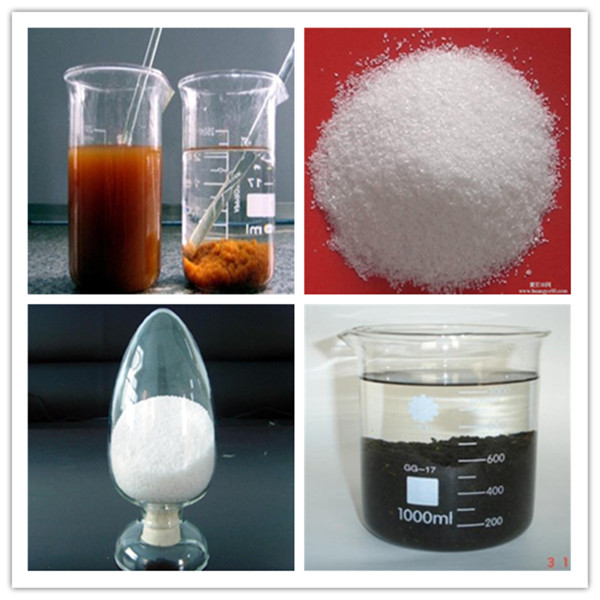News
News
- how does polyamine work in water treatment and mining ?
- Is the zetag 4100 DK a kind of cationic or anionic polyacrylamide?
- what is application of polyacrylamide used for red mud in aluminum plant?
- How does amphoteric polyacrylamide works?
- whats is main applications of amphoteric polyacrylamide?
- what is main applications of nonionic flocculant?
- what is application of polyacrylamide?How is the product classified?what is applications ?
- What are the production processes of polyacrylamide? What are their own characteristics?
- what is PHPA polymer and what is the main applicaitons in oilfeild?
- what is the main application of amphoteric polyacrylamide?
One of the largest uses for polyacrylamide is to flocculate solids in a liquid. This process applies to water treatment, and processes like paper making. Polyacrylamide can be supplied in a powder or liquid form, with the liquid form being subcategorized as solution and emulsion polymer. Even though these products are often called 'polyacrylamide', many are actually copolymers of acrylamide and one or more other chemical species, such as an acrylic acid or a salt thereof. The main consequence of this is to give the 'modified' polymer a particular ionic character.
Another common use of polyacrylamide and its derivatives is in subsurface applications such as Enhanced Oil Recovery. High viscosity aqueous solutions can be generated with low concentrations of polyacrylamide polymers, and these can be injected to improve the economics of conventional waterflooding.

It has also been advertised as a soil conditioner called Krilium , and today "PAM", which is stated to be a "unique formulation of PAM (water-soluble polyacrylamide)". It is often used for horticultural and agricultural use under trade names such as Broadleaf P4, Swell-Gel and so on. The anionic form of cross-linked polyacrylamide is frequently used as a soil conditioner on farm land and construction sites for erosion control, in order to protect the water quality of nearby rivers and streams.
The polymer is also used to make Gro-Beast toys, which expand when placed in water, such as the Test Tube Aliens. Similarly, the absorbent properties of one of its copolymers can be utilized as an additive in body-powder.
The ionic form of polyacrylamide has found an important role in the potable water treatment industry. Trivalent metal salts like ferric chloride and aluminium chloride are bridged by the long polymer chains of polyacrylamide. This results in significant enhancement of the flocculation rate. This allows water treatment plants to greatly improve the removal of total organic content (TOC) from raw water.
Polyacrylamide and Wastewater Treatment
One of the largest uses for PAM is to flocculate or coagulate solids in a liquid, such as in the wastewater treatment industry. PAM can be applied to various types of wastewater. The introduction of PAM as a chemical flocculating agent to wastewater causes suspended particles in wastewater to aggregate, forming what is known as a floc. In addition, PAM products react with water to form insoluble hydroxides, which upon precipitating, link together to form meshes, physically trapping small particles into a larger floc. In simple terms, PAM makes the fine solids in treated water adhere to one another until they become big enough to settle out or be captured by filters to make sewage sludge. In either case, the floc can be filtered or removed more easily.
In municipal wastewater treatment,PAM can be used in all solid-liquid separation processes including primary sewage treatment, activated sludge treatment and digested sludge treatment. In industrial wastewater treatment, the polymers and coagulants are used extensively for a wide variety of industrial processes involving paper, petrochemical, electroplating, textiles,oilfield chemical food, pharmaceutical, leather, breweries wineries, and slaughterhouses. Polyacrylamide can also used to treat water from mineral mining processes, including production of coal, lead, dioxide, titanium, gold, zinc, iron, sand, phosphoric acid, silver, nickel, copper, steel, gravel, alumina uranium as well as potash processing.
Different types of wastewater require different wastewater treatment products, including different variances of PAM. The wastewater treatment product most effective in treating a particular wastewater will depend on, amongst other factors, the acids, chemicals and pollutants found in the wastewater, as well as the charge of the wastewater.
It is widely used in waste water treatment of chemical industry, municipal sewage treatment, such as coal washing, mineral processing, metallurgy, iron and steel industry and electronic industry. It is also used in oil industry to enhance oil recovery which is widely used. In addition, it can be used as paper additives and textile pulp agent. Cationic PAM: It is very efficient in usage and has high dehydration rate. It is used for the waste water treatment in alcohol factory, monosodium glutamate factory, sugar factory, beverage factory, tanneries, dyeing and other fields. It has a better effect to be used together with inorganic coagulant in particular. It can be used as paper additives as well.
Our products have won great reputation in the practical applications. If necessary, I can arrange free samples for your test. Any interested distributors &trade companies & retaliers are welcome to contact us.


